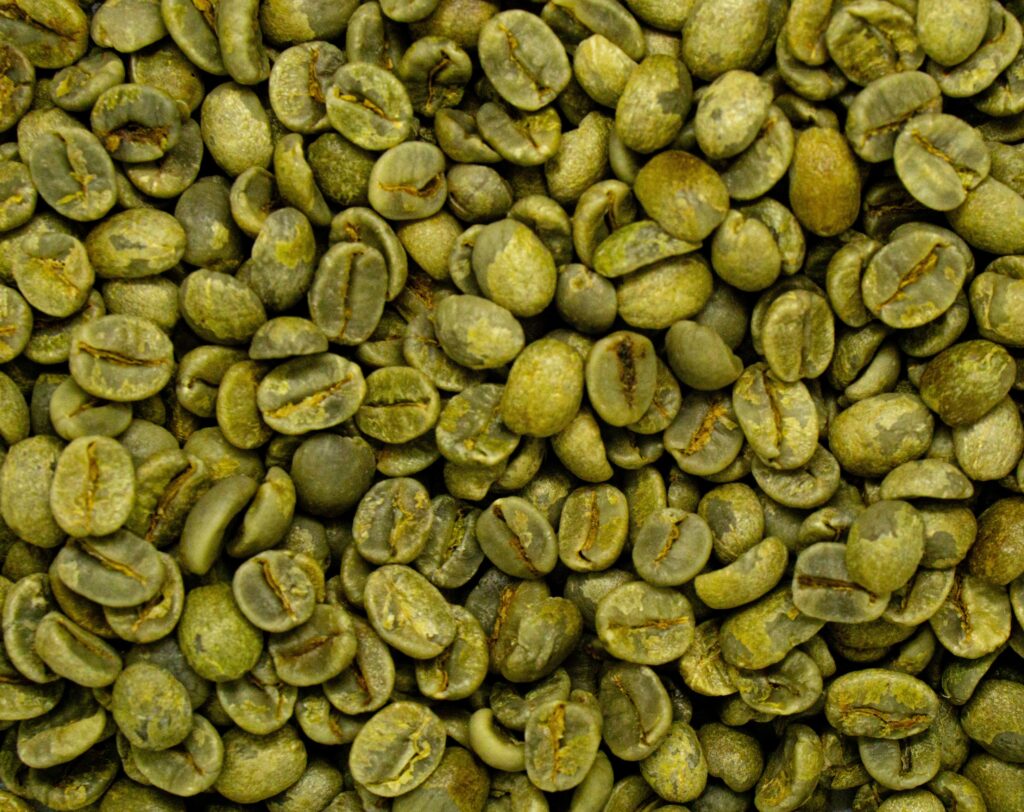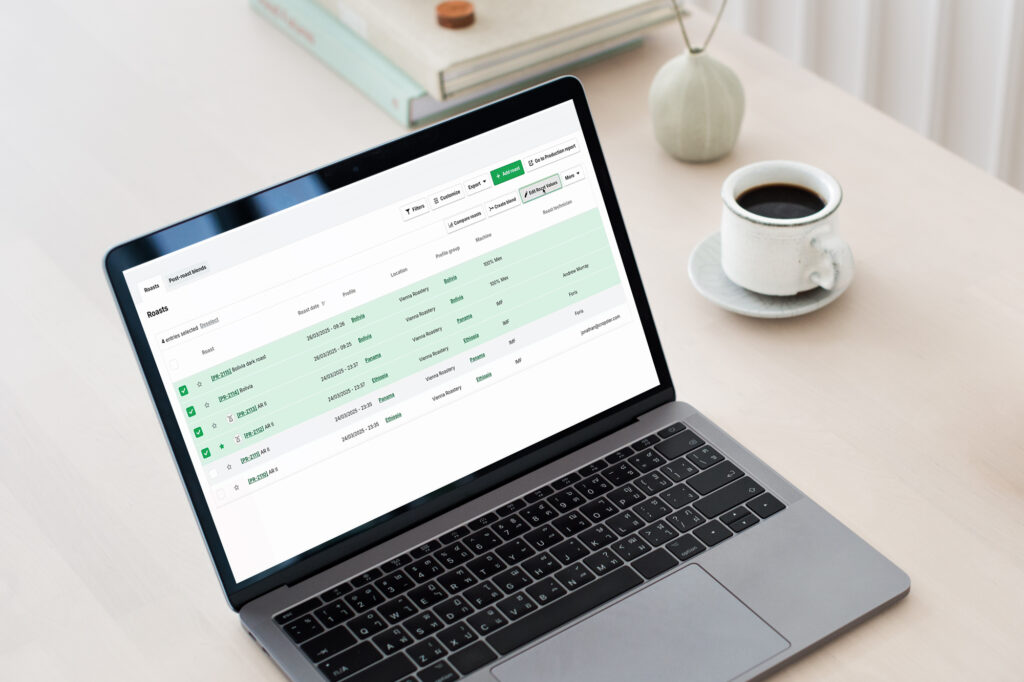2022 World Coffee Roasting Competition
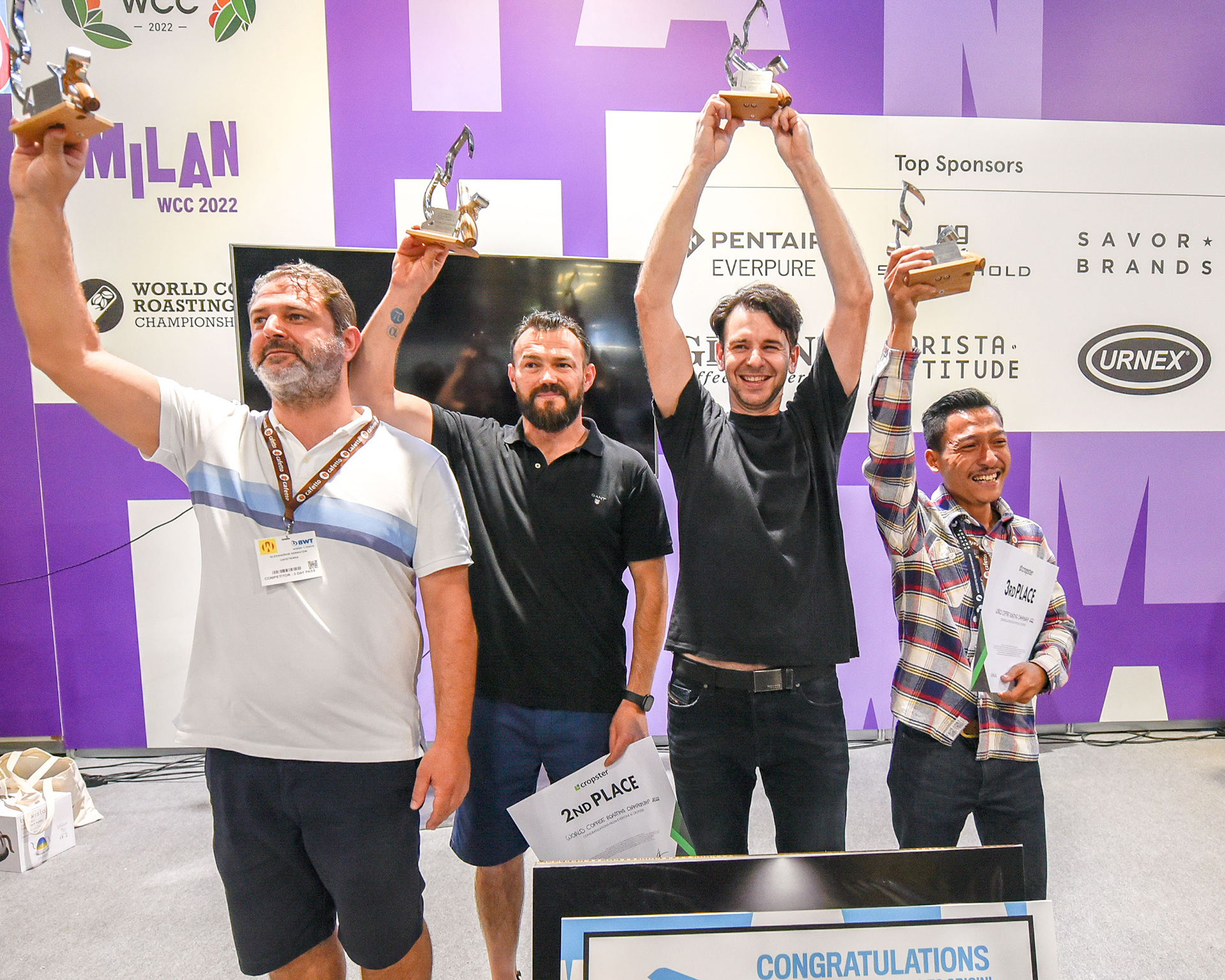
| Cropster
Table of Contents
About the Competition
In the World Coffee Roasting Championship (WCRC), competitors are evaluated on three key elements. Their success at green grading (evaluating green coffee quality), developing a roasting profile to highlight desirable characteristics of the provided coffees, and on the cup quality of coffees roasted. If you’re interested in learning more about the competition, check out the WCRC website.
The Coffee Roasting Equipment
Stronghold provided the sample roasters, and Giesen provided a colorful lineup of W6A production roasters, which were all equipped with Cropster Roasting Intelligence. Giesen produces ‘plug and play’ roasters which are easily connected to Cropster Roasting Intelligence via an Ethernet cable. For roasting companies, this configuration supports Cropster’s full Gas control and Replay assist (but at the request of World Coffee Events, we disable those advanced features for competitions).
A few important notes:
Competitors can, but do not have to, track events like First Crack and Color Change with Cropster.
First Crack is shown in the profiles below when competitors used Cropster to track those profile variables.
The other “bubbles” on the graph highlight comments like gas changes.
Cropster automatically logs gas, drum pressure, and drum speed changes in separate charts shown below.
The Coffees
Single Origin coffee
Nicaragua SHG EP washed Limoncillo
Estate Finca Mierisch
Moisture content: 11.2%
Density: 821 g / L
Sponsored by InterAmerican Coffee
Blending coffees:
Ecuador: Chinchipe Fully Washed Blend.
Moisture Content: 12%
Density: 818 g / L
Sponsored by Algrano Coffee
Kenya Washed AA Top Kiamwangi
Moisture Content: 10.4%
Density: 828 g / L
Sponsored by Sandalj Coffee
Honduras Copan region
Las Capucas
fully washed
Moisture content: 11.5%
Density: 838 g / L
Sponsored by Imperator Coffee
Results for the 2022 World Coffee Roasting Championship
CONGRATULATIONS to all the competitors from all of us here at Cropster! The new World Coffee Roasting Champions are:
1: Felix Teiretzbacher, Austria, 482.00 points
2: Simo Christidi, Norway, 479.00 points
3: Wisnu Aji Pratter, Indonesia, 478.75 points
You can view the full rankings for the 2022 competition on the WCRC website.

Cropster is honored to sponsor this event and to provide the software for the world championship and many national competitions. We love supporting the competitors and providing the tools to help them get the most out of the competition coffees.
We believe in collaboration and that sharing information makes everyone better, which is why we built the ability to share information into Cropster. Of course, if you are working on your proprietary profiles and blends, we also have advanced security and tools to keep that information private.
For this year’s championship, let’s go into the details of the winners’ profiles.
Roast Profiles from the Top Three Roasters
We’re using the Roast Compare function to give you an overview of all the curves and roast details of both blend and single origin roasts of all three winners. This view shows all temperatures, gas, RoR and also the modulation chart. If you were using Cropster in a live environment (instead of viewing images in a blog), you’d be able to hover over the graphs to see temperature developments, recalculate RoR and more. In case you want to check out the single roast curves, we’ve added the individual roasts of each winner separately below the Roast Compare view.
Roast compare report – Single origins



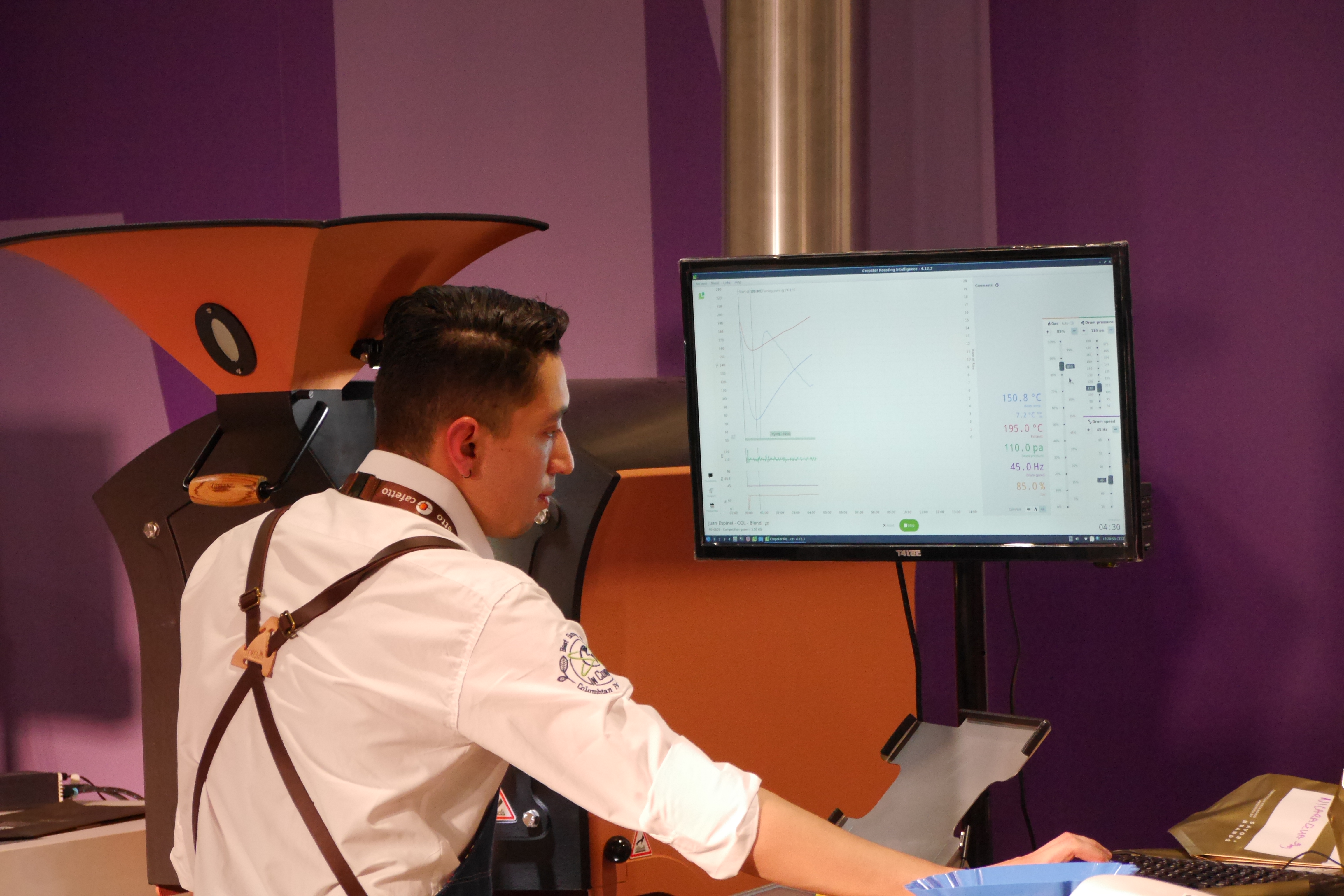
Roast compare report – Blends
1st Place – Felix Teiretzbacher
Blend Recipe (pre-roast blend 80% Kenya, 10% Ecuador, 10% Honduras)
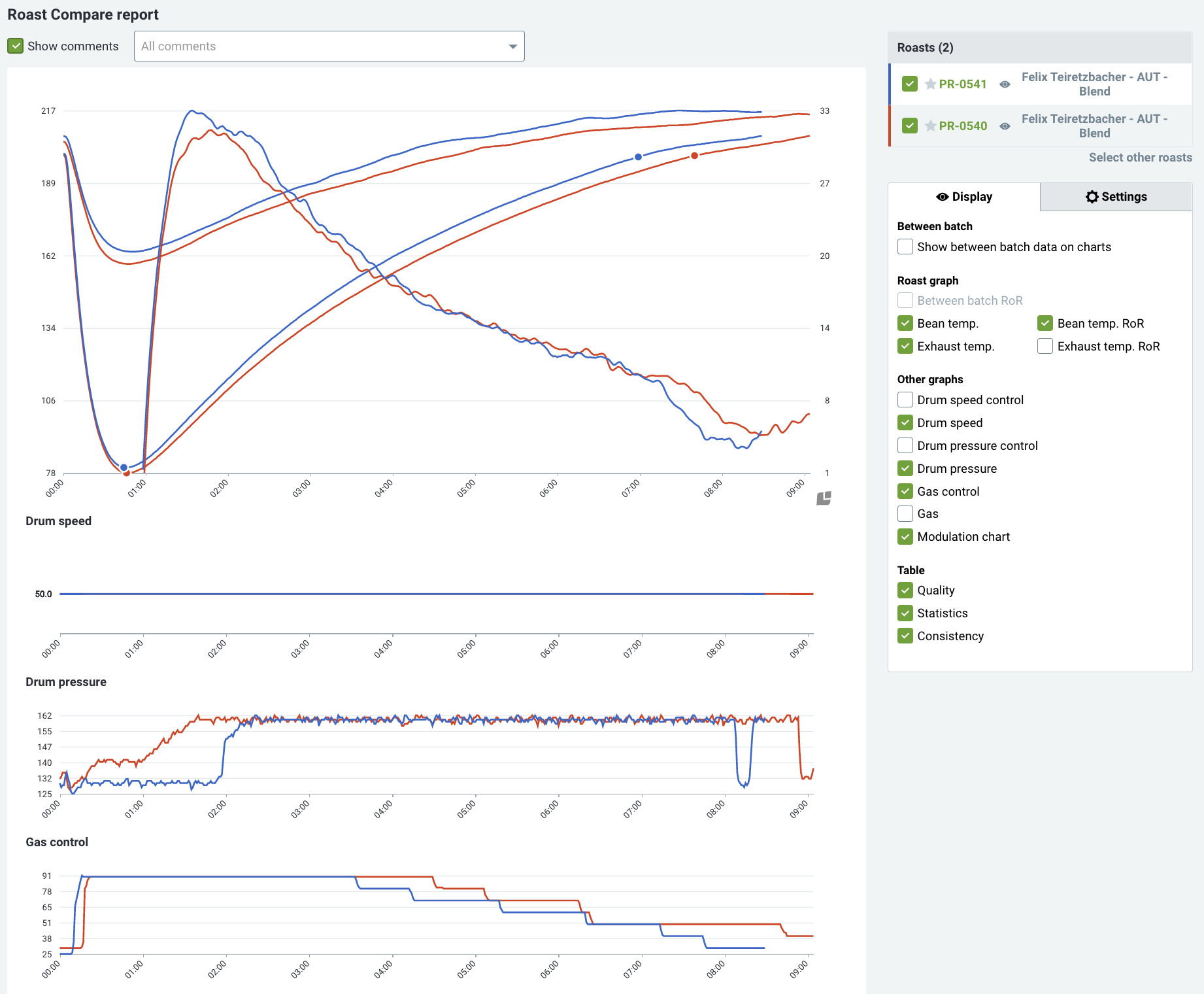

2nd Place – Simo Christidi
Pre-roast blend of Ecuador and Honduras
Post-roast blend with Kenya
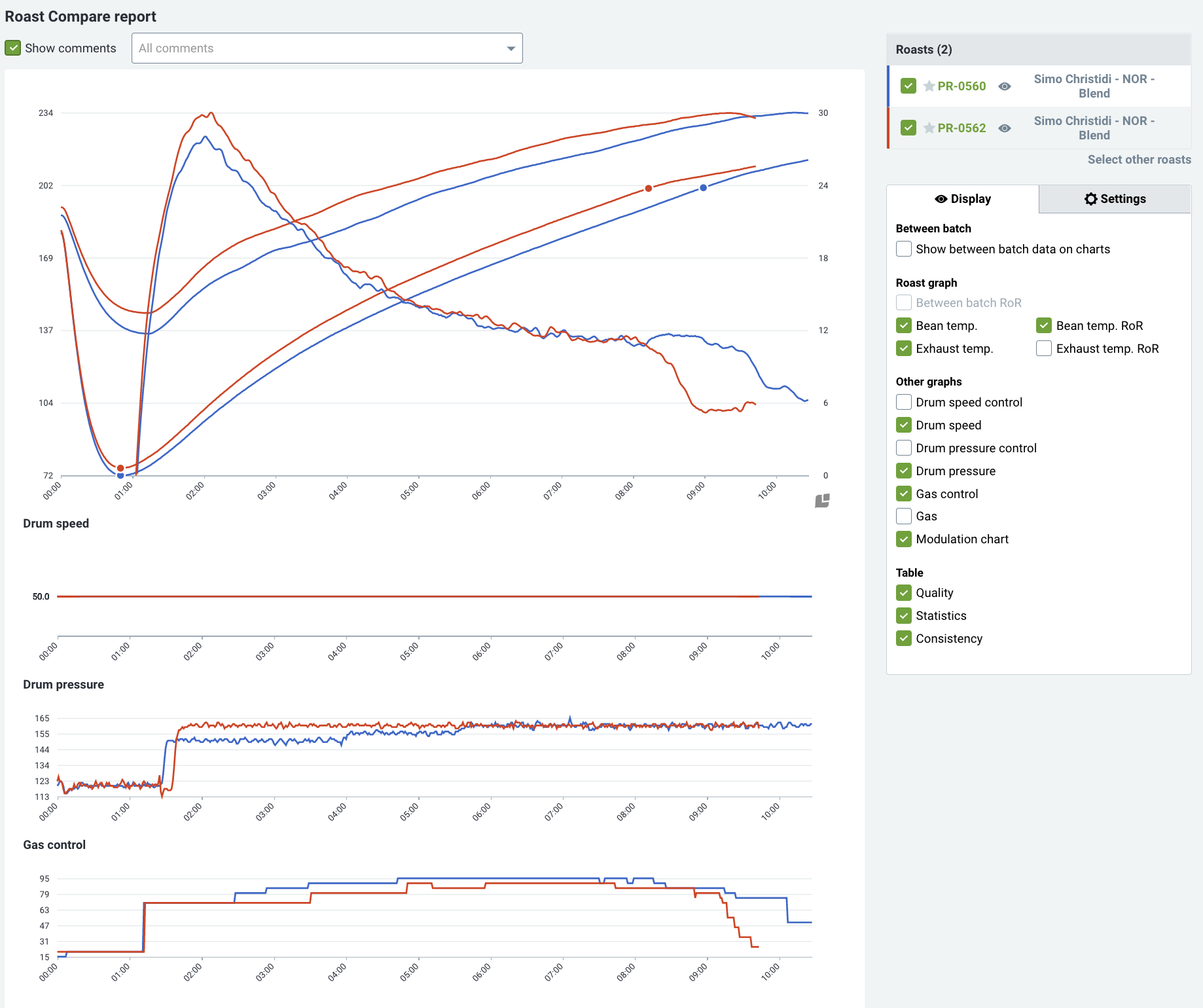
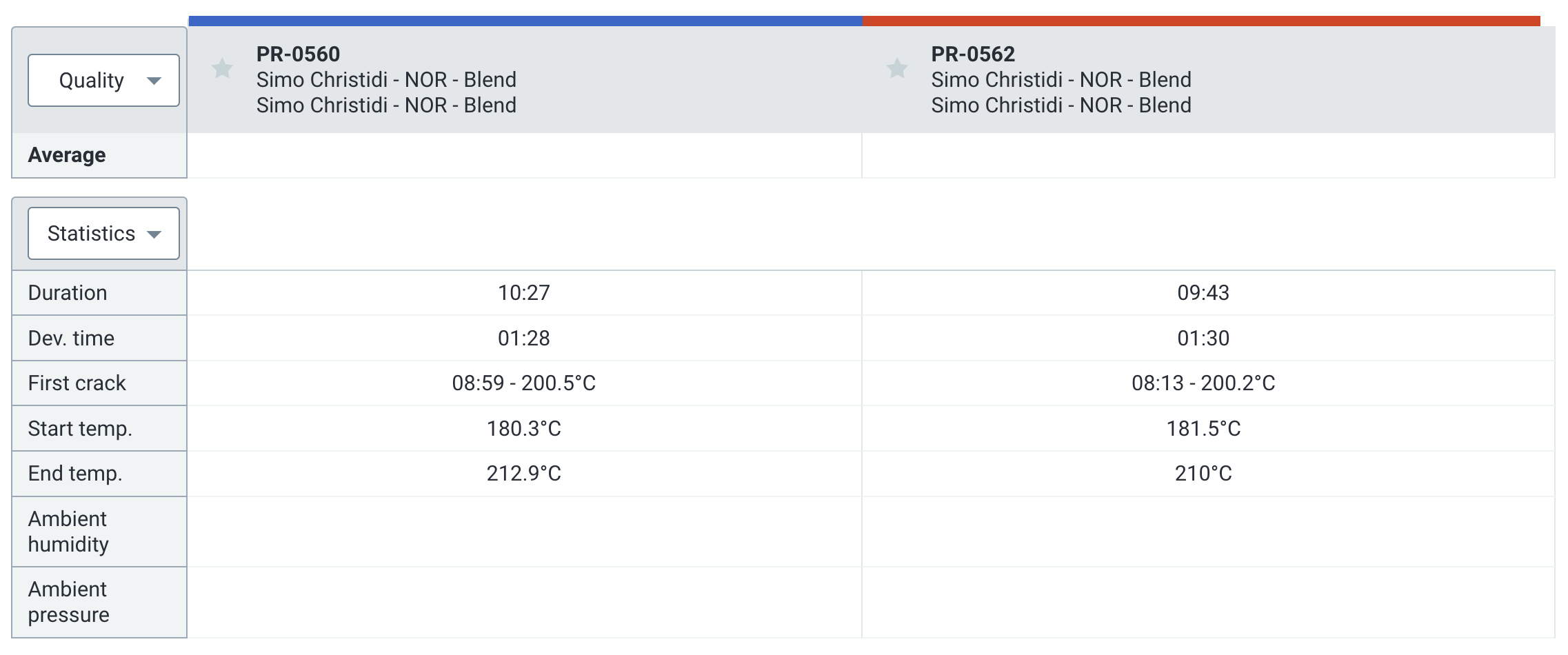
3rd Place – Wisnu Aji
Pre-roast blend of Ecuador and Honduras
Post-roast blend with Kenya
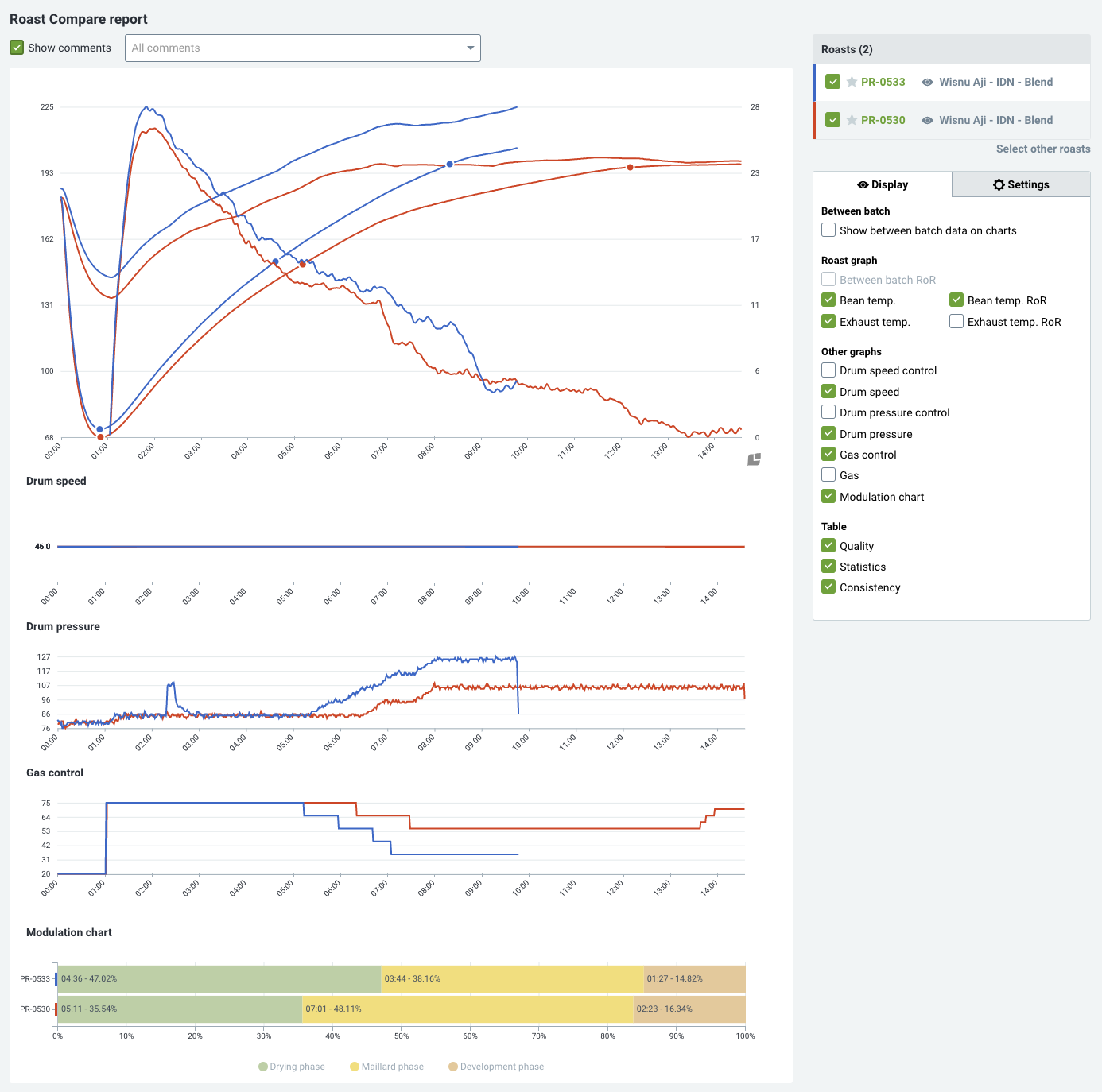
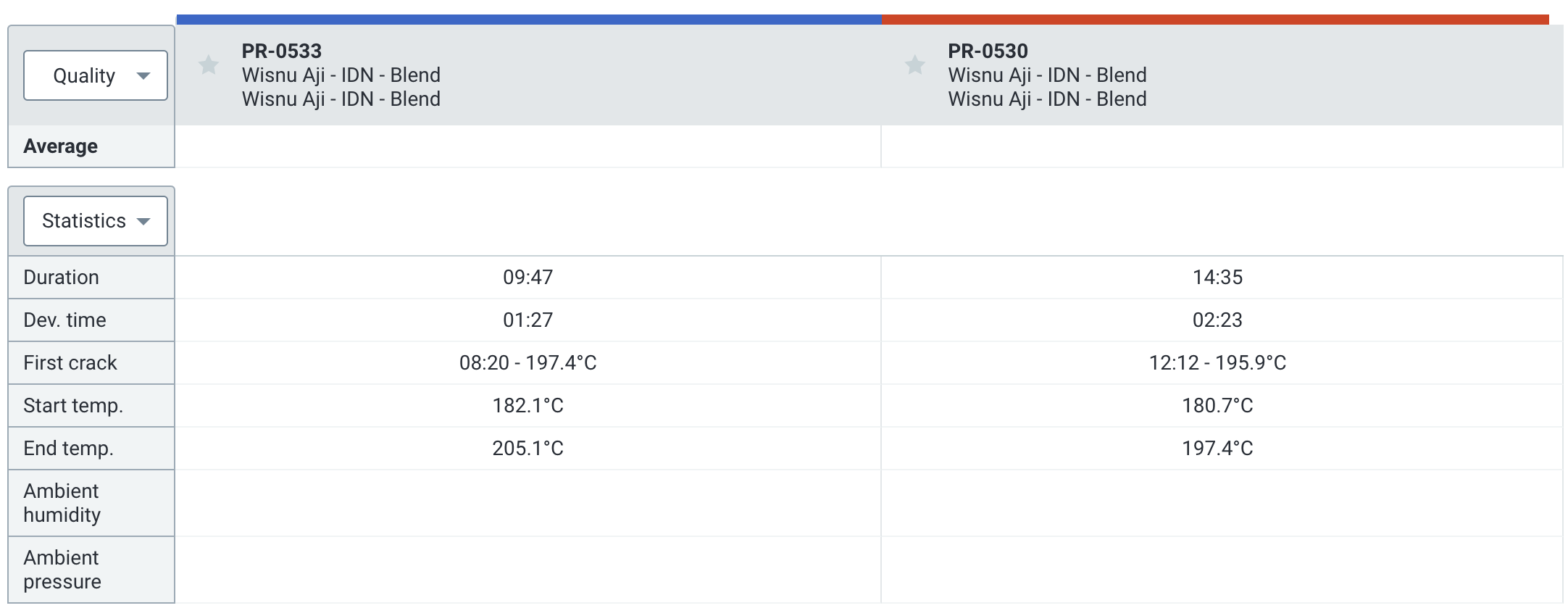
Roaster Interviews
Felix Teiretzbacher
Founder / Roaster
Felix Kaffee
What was your roasting approach to the single origin coffee for WCRC?
It was a challenge for me. It tasted like a lot of nuts. I had a good representative sample roast, and I noticed less fruit, medium body, roasted cashew flavors. I tried to develop it well and not to risk under developing this coffee. It wouldn’t taste good this way. I struggled in the first batch. I couldn’t hear the crack, but for everyone, this was the same due to the closeness of the machines. I saved this roast as a backup and wanted to have some of the flavor notes.
The second batch was just what I wanted to roast, but I changed my mind. I looked at the beans and the development time and decided that the first batch was the better one. I submitted the first batch to the judges. I thought the first batch, with a longer development time, was the better batch to submit. I’m still working to get some of the coffee at my roastery to try and get the best out of it.
What was your roasting approach to the blend for WCRC?
80% Kenya / 10% Ecuador / 10% Honduras
Pre-roast blend
Played it safe to be on time. No issues with mixing wrong. Developed it a bit more to be sure the centrals were not underdeveloped. The Kenya cracks earlier, and that was my goal to have well-developed coffee. The Ecuador was full of defects. I sorted extensively before roasting. The Honduran was muted; it was okay. I thought about increasing this to increase body, but opted not to. I didn’t want to reduce the qualities of the Kenya. My coach and I cupped it in the open cupping and decided this was the best choice.
What was your biggest challenge in the competition?
My biggest challenge was the single origin and the venue. The venue was noisy. The machines were super close. It was very hard to hear the crack. I was happy to see a coffee like the Kenya – it was a really good coffee. I would have expected something less complex with fewer flavor notes. The practice coffee from Brazil was challenging to hear crack. Not being able to taste the practice roasts was also a challenge. These issues were the same for everyone.
I really missed the green grading this time. I trained, and I really practiced.
Other than winning, what was the most rewarding aspect of the competition?
Of course, winning was great. It was super happy to see all of these coffee people again. It was 2019, the last time I was at an event. It was great to have all the competitors in one room and the World of Coffee exhibition back. All of it made me happy. It was great to be a part of this and to be there. Hugging people, seeing people, seeing the other competitors was great. In Taipei there was just roasting, and having CIGS, Ibrik, Cup Tastes, and Latte Art made it busy at all stages and was great.
If you had to do it over again, is there anything you would do differently?
Every decision was well thought out. I was really happy with every single thing. The result was great. I would try to do a better single origin coffee (which I’m going to try back home)
How would you approach this coffee differently for your own business, or did you just roast them the way you would for your company?
I would roast them differently. I would roast as espresso or filter – more intentional. I would never do a blend with those components. The roast profile would be different. I roasted for cupping in the competition and at my company would roast for the customer.
Simo Kristidhi
Production Manager
Solberg & Hansen
What was your roasting approach to the single origin coffee for WCRC?
My approach, as in any other of my roasts, is based on my roasting principles. My roasting principles are widely known. I’ve been presenting those in different forums. It’s based on 3 main pillars. The roasting time, the colour development and the RoR approach. Those three main pillars can be later on divided in phases, numbers, values, percentages, etc. Although I had to kind of modulate my Nordic style approach to this competition, I roasted based on my principles but modulating the final development to a level that rather fits better to the WCRC than the Nordic competitions. My final score on this single origin was probably the highest one.
What was your roasting approach to the blend for WCRC?
I had to deal with 2 low quality ingredients with lots of defects and uneven beans, and one component with lots of sweetness, cleanliness, and lots of berries, but with extremely high acidity. My ultimate plan was to separately roast the high quality coffee as a single, and the low quality ingredients as a pre-blended roast. Finally, post blend those two batches and deliver the final blend.
What was your biggest challenge in the competition?
My biggest challenge this time was the sample roaster and the production roaster. My sample roasts became slightly darker and my final description of the product wasn’t as accurate as I wanted to be.1- 2 points missed here ????. For the roasting machine, even though I have been practicing a lot on Giesen roaster, I have to say that this is not my favourite roaster and I kind of struggle to control it the way I want.
What was the most rewarding aspect of the competition?
Well, there is nothing else than meeting coffee friends from all over the world. I missed this competition for the past two years. It’s a great feeling receiving this massive appreciation from coffee professionals. I am a person who loves to share and help, I had the chance to support some new beginners, advice some others or even go to deep discussions about roasting with others. I mean, this is a great place to share and gain knowledge.
If you had to do it over again, is there anything you would do differently?
I would try to cool faster my pre-blended batch from the blend roast. I was 5 seconds late to start the cooling, and I would roast my other part of the blend 5 seconds shorter. Those 2 minor mistakes were enough to lose 1-2 points. Finally, I got only 3 points for being a world champion.
How would you approach this coffee differently for Solberg & Hansen, or did you just roast them the way you would for your company?
I would say that at Solberg & Hansen we are more calibrated as a team and we are more open-minded when we evaluate our coffee. Meaning, slightly light roasted coffee is more acceptable, one can differentiate the taste attributes from a coffee to another from an origin to another, which basically is the meaning in order to highlight the different origins, processes, terroirs, etc. What I see during the WCRC competitions is that 80% of the cups are over roasted, they taste the same and only a few of them stand out. I am seeking diversity on my cupping table, meaning Kenya should stand out like a Kenya, Peru like a Peru, Colombia like a Colombia. And finally, as I mentioned earlier, I have my principles when it comes to roasting. Those are not about to change, but in order to get the expected result, they can be slightly adjusted.
Wisnu Aji Pratter
Pratter Coffee Roaster
What was your roasting approach to the single origin coffee for WCRC?
Because the beans used are from America, I choose a not too fast roasting time to make the coffee more complex and gift the more acidity in there.
What was your roasting approach to the blend for WCRC?
For blending I choose to use post-blend.with the pre-blend roast approach for American coffee and single origin roast approach for Kenyan coffee. I roast the coffee separately, for American beans the roasting duration is longer than Kenyan coffee to give a balance for the both potential flavours in each coffee.
What was your biggest challenge in the competition?
Because this is the first time for me using the stronghold machine, I need more adjustment to it.
What was the most rewarding aspect of the competition?
Absolutely the experience, and meet people who have the same passion in the world coffee industries.
If you had to do it over again, is there anything you would do differently?
Well, must be. Because still feel have a lot of shortcomings when competing and I really want to do better.
How would you approach this coffee differently for Pratter coffee roasters, or did you just roast them the way you would for your company?
For me, determining the roasting approach for each coffee is more focused on the coffee beans that I will roast. Different machines and different roasting approach.
———-
Interested in learning more about Cropster?
